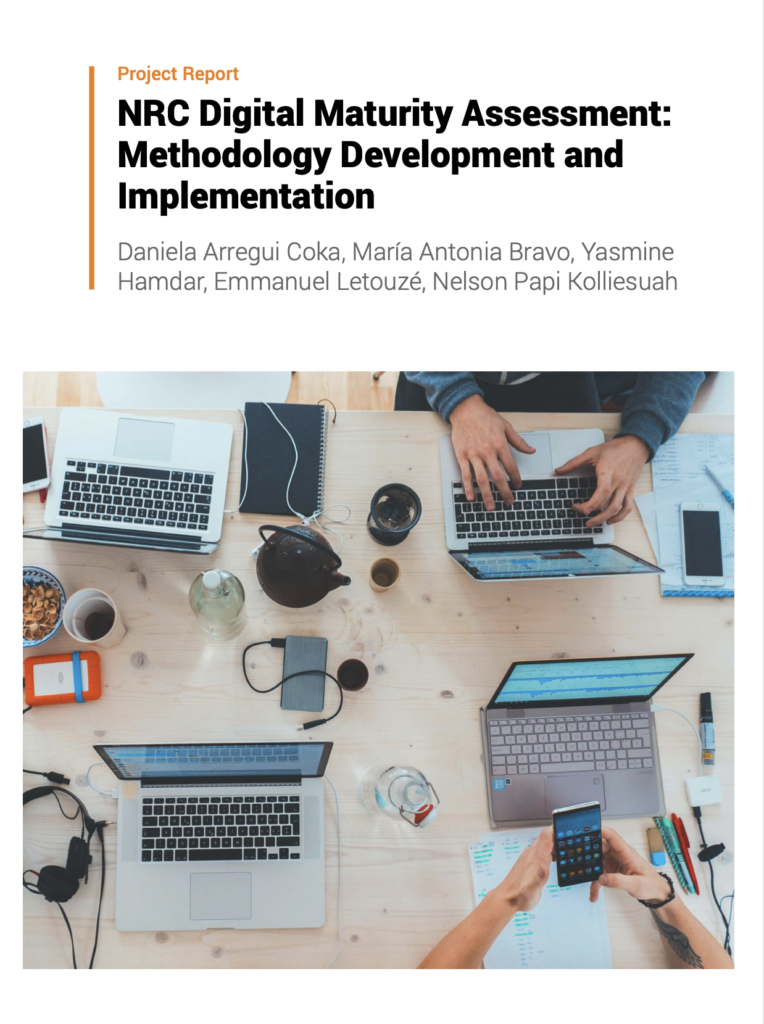Bangladesh
171.1
Population 2022 (Millions)
0.66
HDI Score
2021 (Max. 1)
65.9
SDG Score
2023
(Max. 100)
0.53
Gender Inequality
Index Score
(Max. 1)
64
Internet Inclusivity
Index 2022
(100 countries)
Overview
Projects

- Bangladesh, Iraq, Jordan, Middle East and North Africa (MENA), Niger, South Sudan, Sub-Saharan Africa (SSA), the Democratic Republic of the Congo
- September 2020 - February 2022
- Just Digital Transformations
- Partner(s): ADE (Funder), World Food Programme
This evaluation, developed in collaboration with ADE, examined the extent to which WFP effectively and efficiently deployed the most appropriate Information and Communication Technologies (ICTs), and how, why, and under which conditions the use of these technologies contributed to management and program objectives. The team designed a mixed-methods approach consistent with WFP’s proposed analytical framework and outlined the factors affecting technological innovation and diffusion. Additionally, six case studies were conducted in Jordan, Niger, Iraq, South Sudan, the Democratic Republic of the Congo, and Bangladesh.

- Africa, Asia Pacific, Bangladesh, Burkina Faso, Egypt, Ethiopia, Ghana, India, Kenya, Mozambique, Nepal, Sierra Leone, South Asia, Sudan, Uganda, Zambia
- June 2022 - May 2023
- Data Feminism
- Partner(s): UNFPA, UNICEF (Funder)
The need to end child marriage and FGM has never been greater –without accelerated progress to end both of these harmful practices, millions of women and girls across the globe will continue to be in danger. DPA, in collaboration with UNICEF and UNFPA, conducted a comprehensive landscape mapping and review of key technology-based interventions to address child marriage and FGM across 13 countries in Africa and Asia (Bangladesh, Burkina Faso, Egypt, Ethiopia, Ghana, India, Kenya, Mozambique, Nepal, Sierra Leone, Sudan, Uganda, Zambia). During the second phase of the project, DPA carried out an in depth review of three selected interventions to better understand their effectiveness, key success factors, and potential areas for improvement.
The methodology proposed by DPA was based on intersectional feminist approach and an analysis integrating both quantitative and qualitative research methods, as well as traditional and non-traditional data sources collected at different stages of the study, underpinned by a participatory approach involving UNICEF, UNFPA, and other stakeholders.

- Bangladesh, Global, Sudan
- November 2021 - June 2022
- Just Digital Transformations
- Partner(s): Norwegian Refugee Council (NRC) - (Funder)
DPA developed a Digital Maturity Assessment (DMA) framework to provide NRC Country Offices (COs) with a tool to self-assess their digital transformation journey based on the perceptions and experiences of its staff. The DMA framework is the analytical background guiding the calculation of a Digital Maturity Score that measures the level of digital transformation in the COs based on qualitative data on:
• Digital ecosystem, data, and tech management;
• User-centricity and digital inclusion;
• Digital mindset, literacy, and innovation;
• Strategy, governance, policies, and frameworks; and
• Investment and partnerships.
The DMA was tested in the COs in Bangladesh and Sudan. The results and outputs of these pilots were made available in an interactive dashboard created to facilitate the visualization and extraction of insights.

- Bangladesh, South Asia
- March - June 2024
- Data Feminism, Geographies of Inequalities
- Partner(s): UN Women (Funder), UN Women Bangladesh
Data-Pop Alliance (DPA), in collaboration with UN Women, conducted a geospatial analysis of care systems within Bangladesh to facilitate evidence-based decision-making processes and investments in the care economy. Utilizing data from the geo-coded Demographic and Health Survey conducted in Bangladesh in 2022, this analysis aimed to identify districts with the highest concentration of children and other age-specific care requirements, assess women’s employment rates and relevant economic indicators, and incorporate climate-related factors to understand the potential impact of climate change on care demands. The primary objective of this research was to enhance evidence-informed decision-making processes regarding investments in various types of care delivery models tailored to specific care demands.
